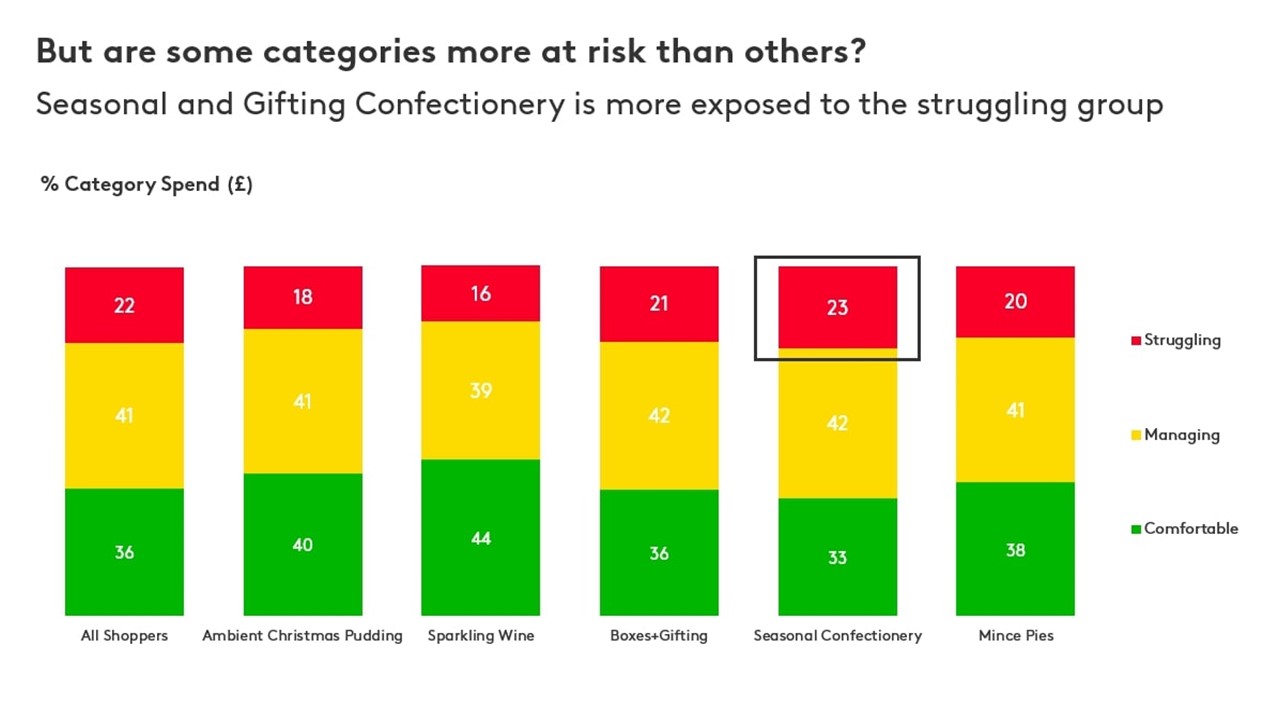For retailers and grocery manufacturers, the Christmas period is typically the busiest time of year with spending 14% above non-holiday periods. Shoppers are also often willing to “trade up” to more premium offerings as they treat themselves or buy something special to celebrate with family and friends. So with rising prices, will shoppers moderate their spending?
Compared to 2019 (a more relevant comparison since it was before Covid-19 and the increases in consumption due to lockdowns), British shoppers this year are reducing the number of products they buy, placing 3% fewer packs in their basket. However, they’re up 1% on the purchase of larger packs, a small net change of 2%.
Perhaps the more interesting change comes in the shift shoppers are making to purchasing cheaper packs, compared to 2019. Spending on more affordable products, such as retailer own-label value ranges, and more inexpensive store choices, such as discounters, is seeing a reduction in spending of 4%.
“This suggests that shoppers are still seeking ways to treat themselves but are making cheaper choices within categories or shifting to other categories for more cost-friendly treats. The headline here is that the impact of shoppers buying less is about half the impact of people trading down,” said Andrew Walker, Client Knowledge Director for Kantar Worldpanel.
Walker said an examination of trended data showed evidence that the primary choice shoppers were making to balance their spending was to trade down first in some categories before looking to buy less in other categories.
This trend comes as one in four Britons classify themselves as financially “struggling” in the latest survey by Kantar. Those who say they are “comfortable” continue to decline.
A deep dive into the “struggling”, “managing” and “comfortable” buyer groups found that seasonal and gifting confectionery categories were more exposed to those who were struggling.

From a timing perspective, buying trends this year are tracking towards past years, but two wild cards exist in the football World Cup starting in November and the deployment of new legislation in October that limits the in-store locations for products high in fat, sugar, and salt (HFSS). Key Christmas products such as sweet treats, cakes, and salty snacks often fall into HFSS classifications.
One area of opportunity Kantar has identified is among typically older shoppers - empty nesters or retirees. December typically sees a 2% increase in the share of grocery spending coming from these households.
Hence ensuring they are well served will be critical to maximising trading, particularly given that older shoppers are statistically more likely to sit in the group of shoppers who describe themselves as “comfortable.”
Kantar Worldpanel is conducting an ongoing webinar series examining the impact of the cost of living. For more, or to join the sessions, please click here.

